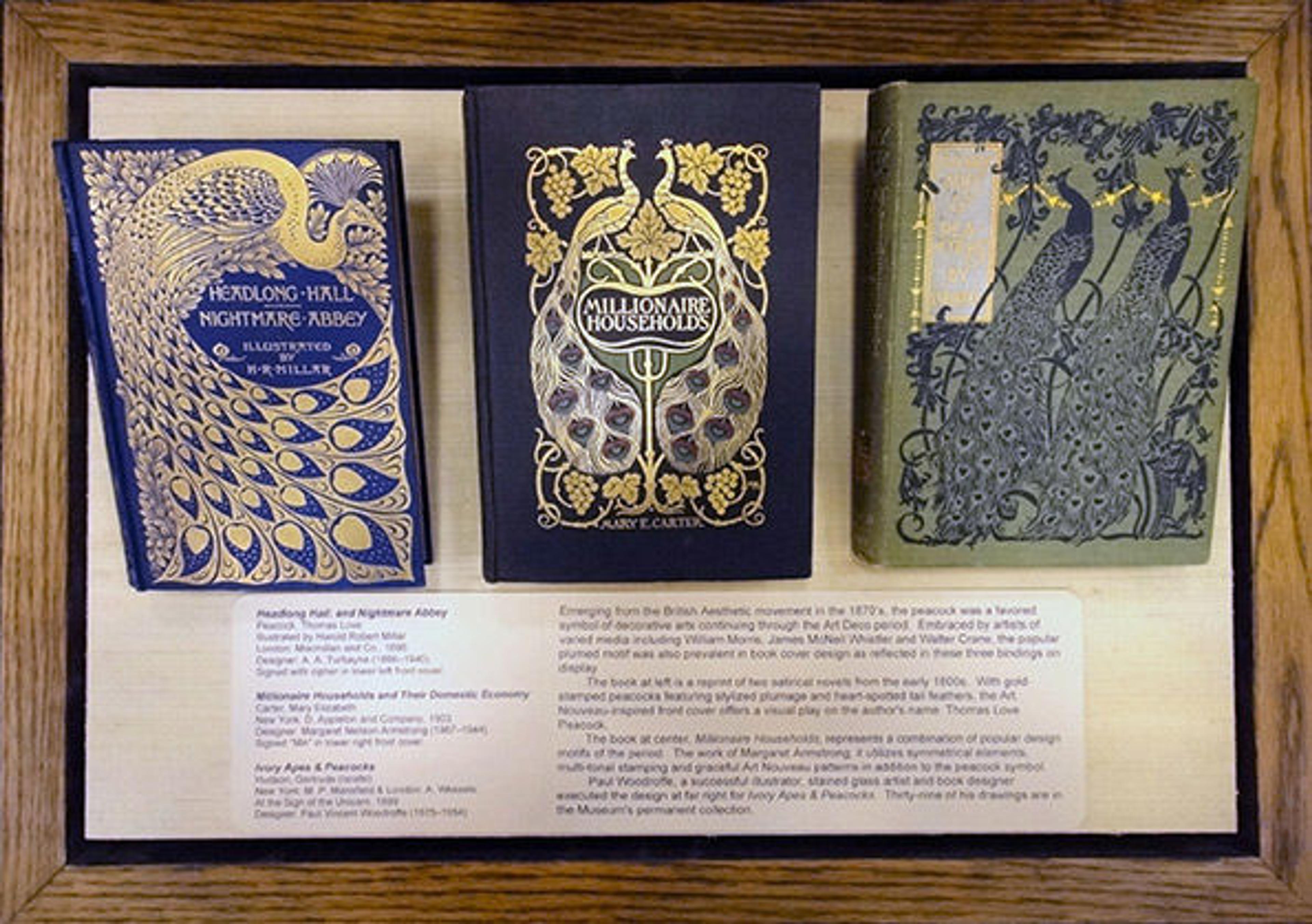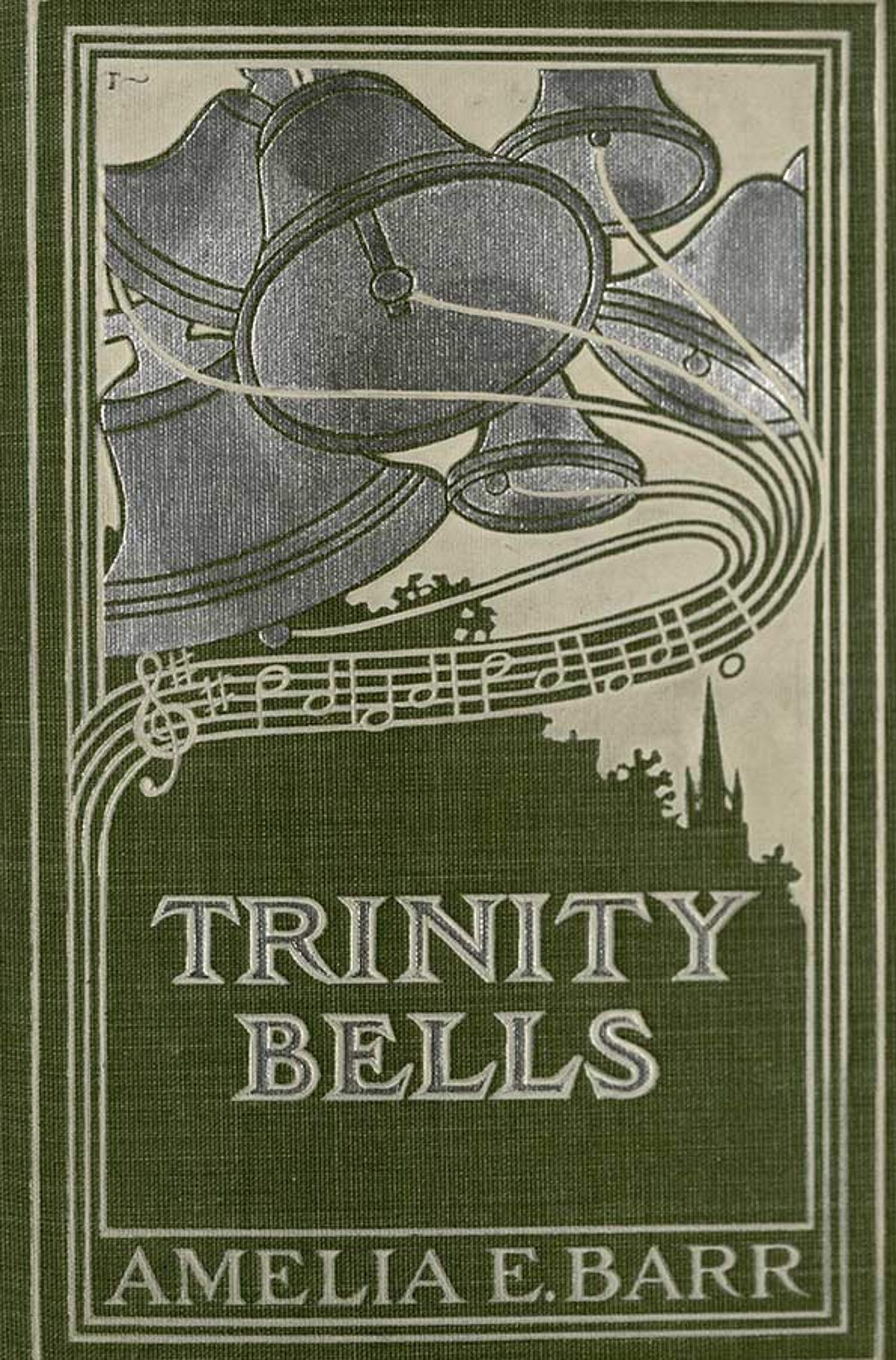American Bound: Watson's Rare Trade Bindings, Part II
Left: Ungava Bob, designed by The Decorative Designers. Center: A Thousand Days in the Arctic, attributed to Thomas Watson Ball. Right: Letters from an Oregon Ranch, designed by Frank Hazenplug
«In an earlier post we discussed Watson's collection of nineteenth-century American trade bindings, purchased with funds from the Friends of Thomas J. Watson Library. We will continue to look at more of these trade bindings here, and explore themes not addressed in the previous post.»
Pictorial themes are a hallmark of American decorated bindings, including landscapes. At the turn of the twentieth century, American popular literature focused on survival tales in the untamed wilderness. Titles like these exemplify the period, with cover art that emphasizes a rugged winter landscape with minimal human presence. All three covers in the image above represent the work of notable designers and incorporate the bookcloth as part of the design, creating striking contrasts and the visual illusion of depth of field.

Left: Headlong Hall and Nightmare Abbey, designed by A. A. Turbayne. Center: Millionaire Households, designed by Margaret Armstrong. Right: Ivory Apes & Peacocks, designed by Paul Woodroffe
Emerging from the British Aesthetic movement in the 1870s, the peacock was a favored symbol of decorative arts through the Art Deco period, and it is another theme that appears regularly on book covers. Embraced by artists of varied media including William Morris (1834–1896), James McNeil Whistler (1834–1903), and Walter Crane (1845–1915), the popular plumed motif is also reflected in these three bindings. The book at left, Headlong Hall and Nightmare Abbey, is a reprint of two satirical novels from the early 1800s. A. A. Turbayne utilized a finely engraved stamping die for this design that made the gold appear to shimmer, depending how the reader holds the book to the light. With peacocks bearing stylized plumage and heart-spotted tail feathers on the spine and front cover, the Art Nouveau–inspired design offered a visual play on the author's name: Thomas Love Peacock.
Macmillan later used this same template for other titles written by the author. The book at center, Millionaire Households, designed by Margaret Armstrong (1867–1944), represents a combination of popular design motifs of the period. In this design, Armstrong used symmetrical elements, multitonal stamping, and graceful Art Nouveau patterns in addition to the peacock symbol. Armstrong later revised this design for Twenty Centuries of Paris (in Watson's Special Collections). Paul Woodroffe (1875–1954), a successful illustrator, stained-glass artist, and book designer, executed the design at far right for Ivory Apes & Peacocks. Thirty-nine of his drawings are in the Museum's permanent collection.

The Circle, designed by Thomas Watson Ball
The library also recently purchased eighteen bindings by Thomas Watson Ball (1863–1934), adding to an already growing collection of his dynamic work including The Circle and two covers attributed to Ball—Trinity Bells: A Tale of Old New York and A Thousand Days in the Arctic. Known for his Pointillist and Impressionist styles, Ball designed the geometric, aesthetically pleasing cover for The Circle with interlocking circles on cream cloth stamped with red, orange, and green. Trinity Bells, signed "T~" on the upper-left corner of the front cover, has silver (white metal) stamping, which was unusual for this time.

Trinity Bells: A Tale of Old New York, designed by Thomas Watson Ball
In addition to American decorated bindings, the Library recently purchased seventy-nine Czech bindings published by Jan Otto (1841–1916) and thirty-six volumes with linocut wrappers designed by Czech artist Josef Capek (1887–1945).
As Watson continues to expand its collection of American and international decorated book covers, many will be put on temporary display in the Library. We hope that visitors will come by to enjoy these new acquisitions. Also check out our Facebook "Friends event" album, which highlights some of the bindings in the collection.
Related Link
In Circulation: American Bound: Watson's Rare Trade Bindings
Holly Phillips
Holly Phillips is the collections manager for acquisitions in Thomas J. Watson Library.
Diane De Fazio
Diane De Fazio is a volunteer in the Thomas J. Watson Library.
William Blueher
William Blueher is the manager of cataloging in Thomas J. Watson Library.